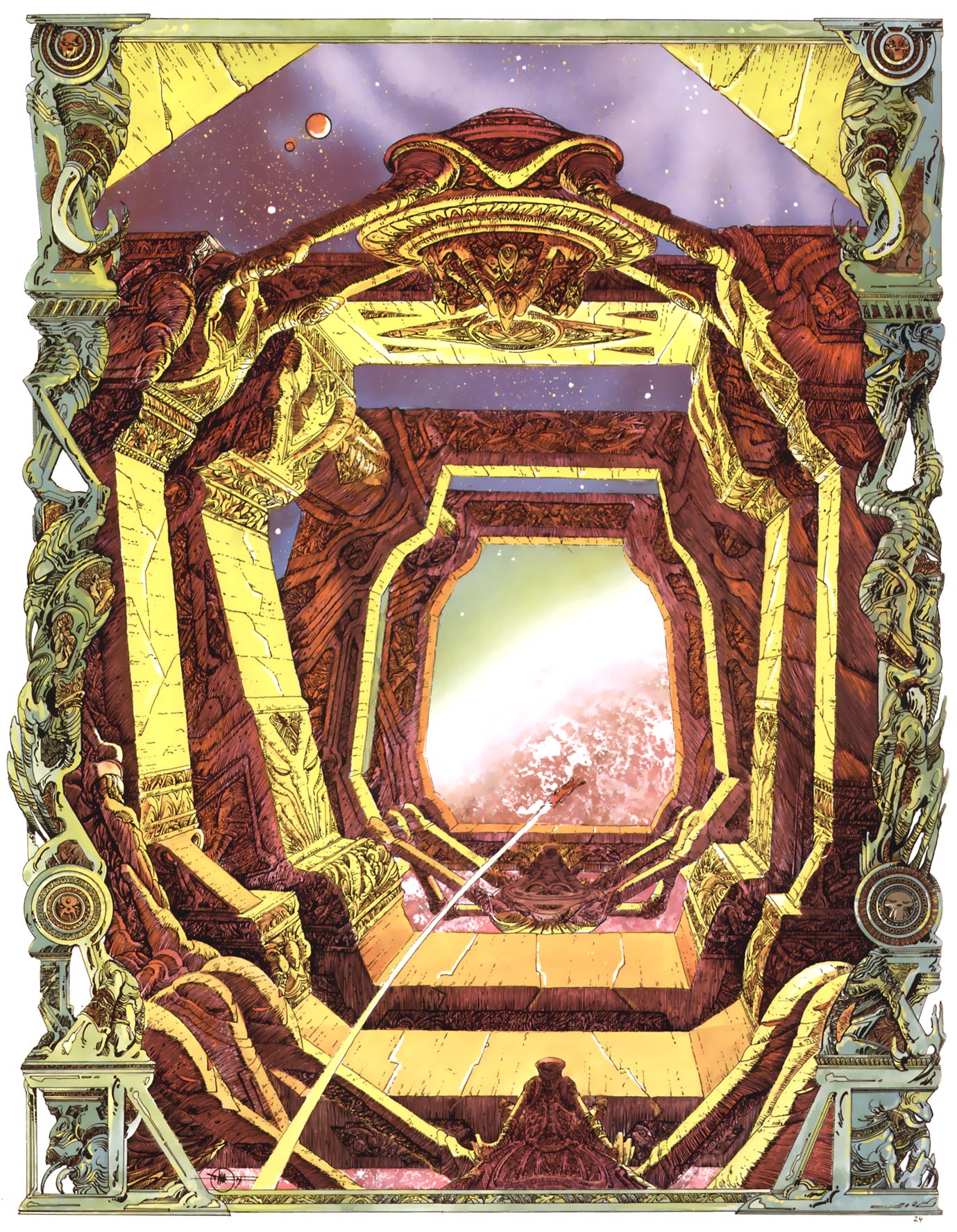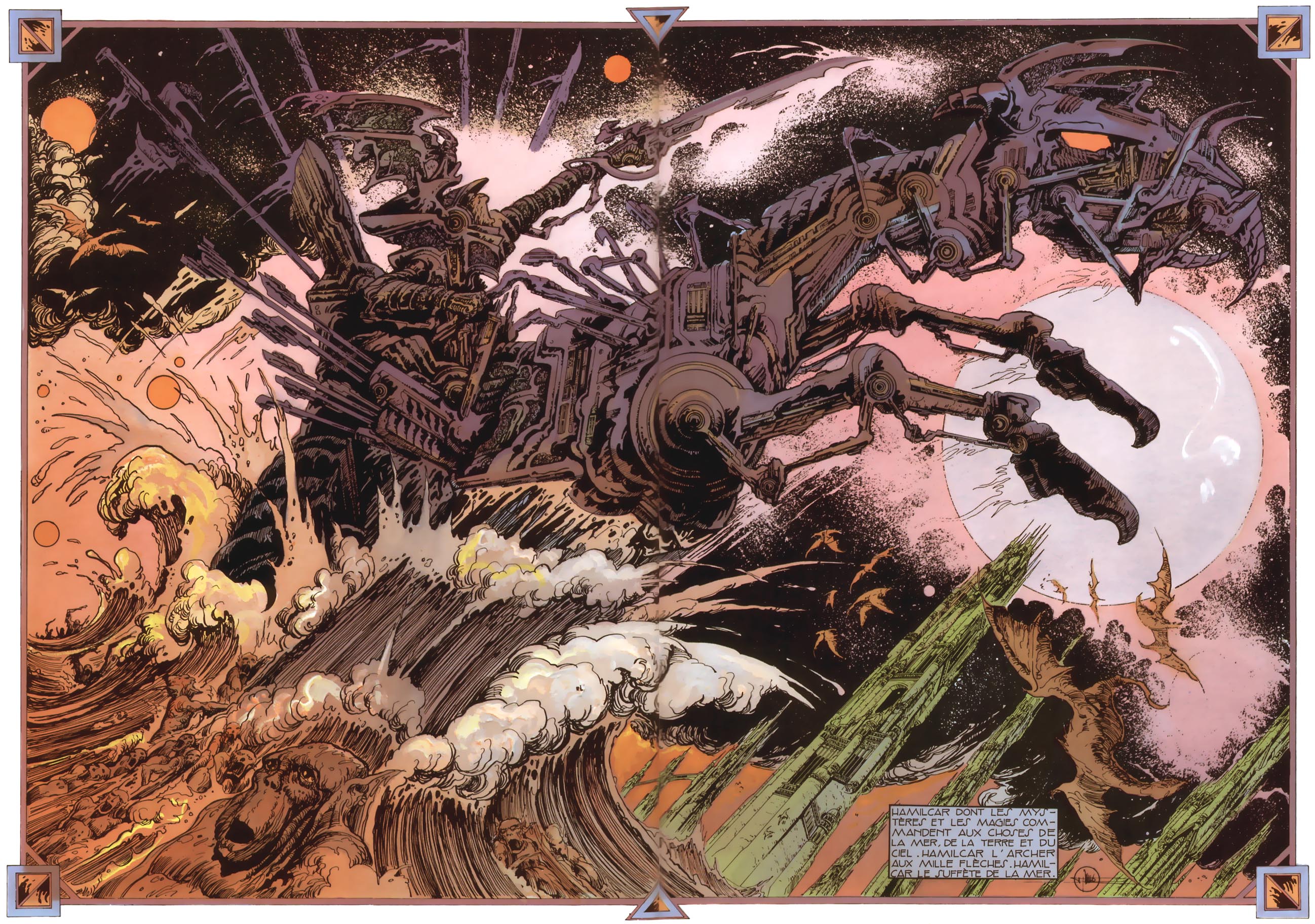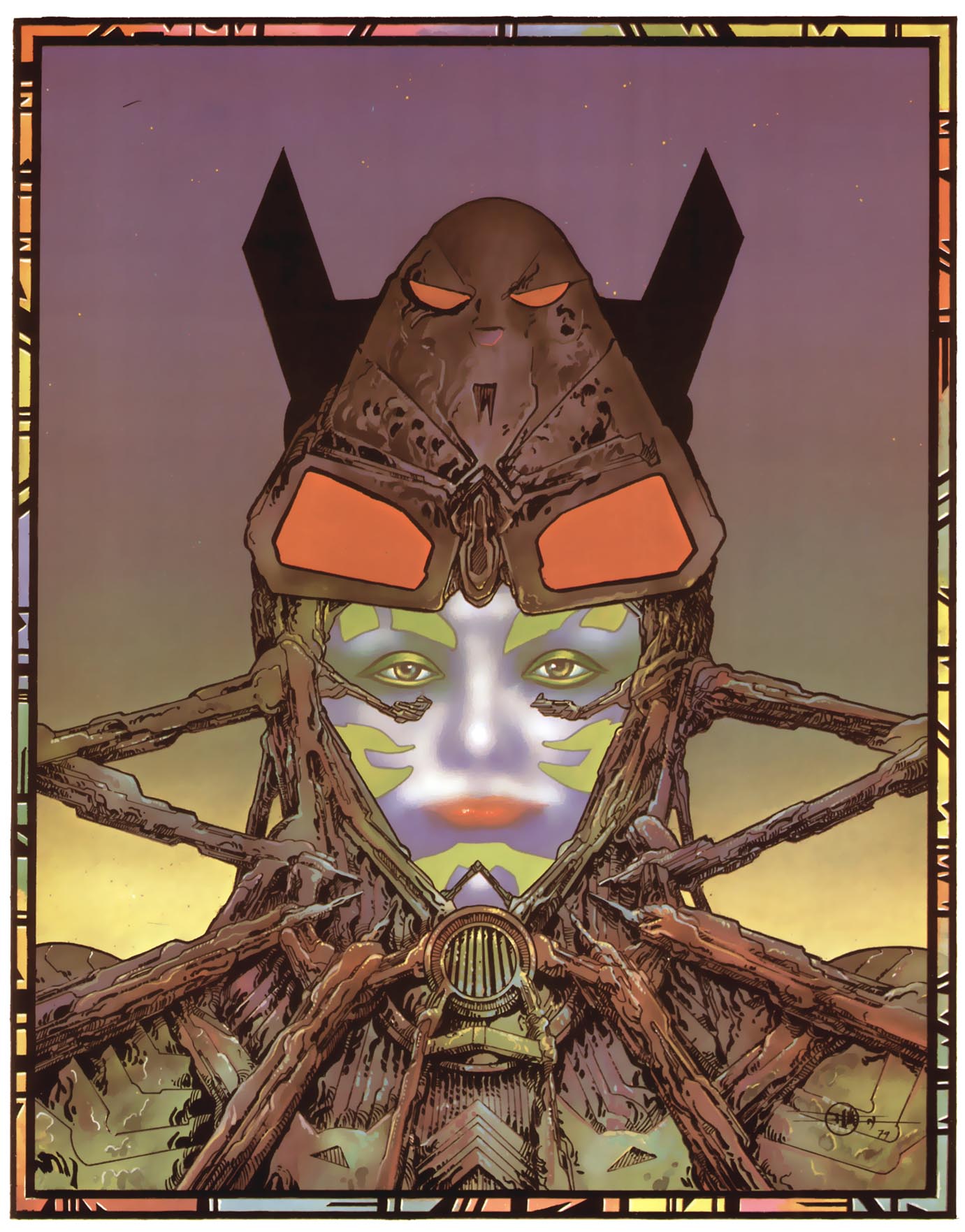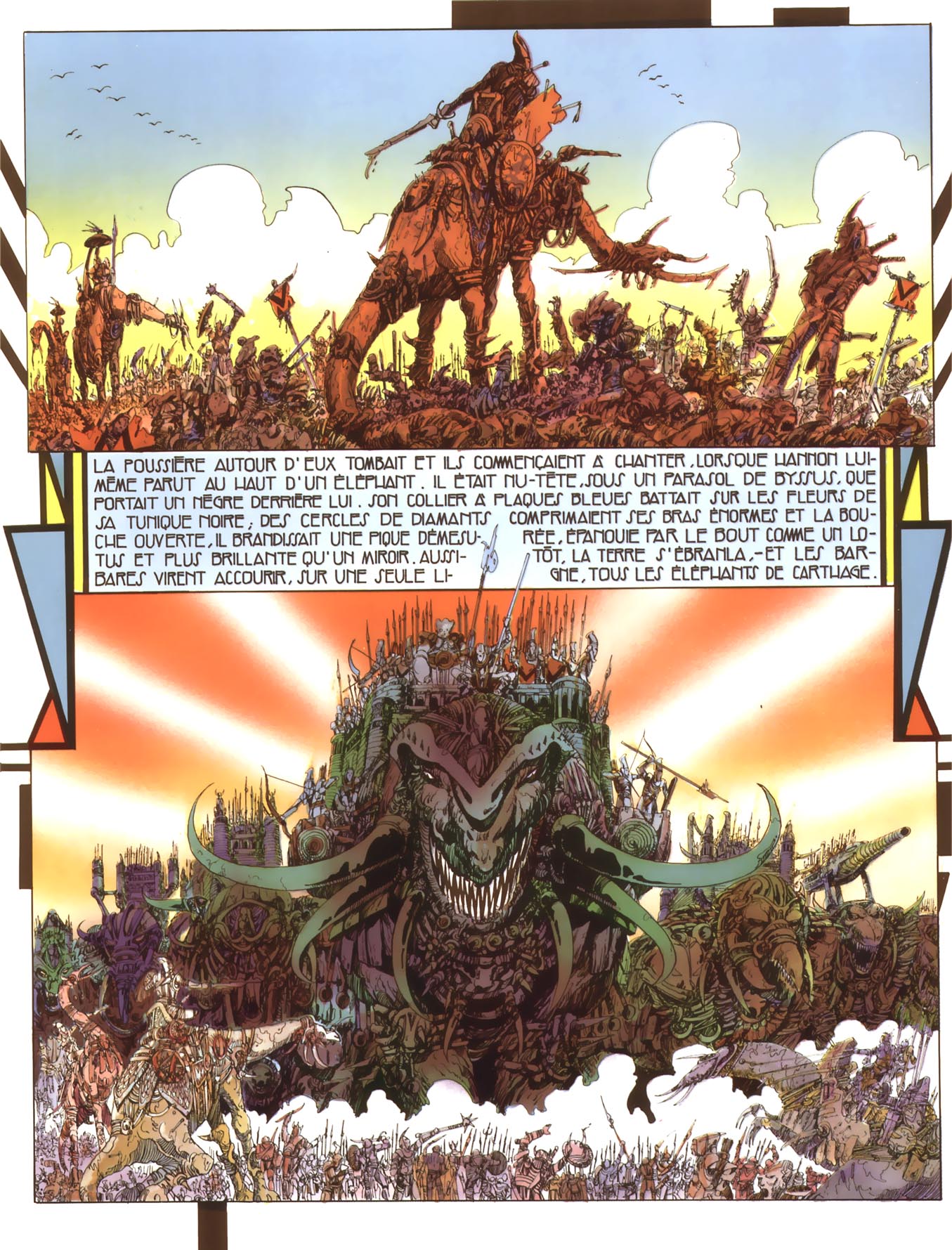Philippe Druillet is one of those artists, like Moebius, who upon being exposed to his work immediately divides your life into a pre/post situation. There’s the way you saw comics before Druillet and the way you saw them after. And like Moebius, he is an artist who despite his work in comics, and hollywood–goes largely ignored by North American audiences above the age of growing up on Heavy Metal magazine. The only book of his that is easily accessible is the brilliant coda to his Loane Sloane epic, Chaos. That work sent me down a rabbit hole of works like Vuzz, La Nuit, the Lone Sloane series and others–but through them all there was one work that stood above all of the rest monolithic in it’s splendour. And that work was his Salammbo trilogy. Based on the novel by Flaubert which I have not read, written in a language I couldn’t understand–and yet it was the work from which I could not turn away.
In Salammbo, Druillet combines all of the techniques he had been using to that point in his artistic career to create something finally completely beyond the sum of its parts. His work here reaches a plane on which a HR Giger or Beksinski painting might sit. He has created in these ecstatic sublime future primitive tableaus a procession of almost religious holiness. This is an all A-sides album. Just banger after banger after banger. He is so assured in every element of his composition that you can’t help but be held in rapture with his storytelling. His coloring palette which to this point would at times overtake the images themselves–is now at one with them, without sacrificing any of their garish insanity. A lot of these pages presage later work by Brendan McCarthy with their neon airbrushed quality.

The character designs of even basic background characters in Salammbo are stunning. There are no cut corners here. So when you see these epic battle scenes–the scale can only be described as positively apocalyptic. The only modern comparison there is is James Stokoe’s work on Orc Stain. But this is a scale even beyond that. Where in Orc Stain a battle scene might involve hundreds flying around with giant beasts and crumbling buildings–with Druillet it’s hundreds of thousands, filling the page–almost threatening to explode it with their strange alien fashions until they finally fade off into the distance of the horizon.

And the detail is enough to make you want to quit ever trying to create comics. Pure fuck you pages. The amount of thought and storytelling Druillet puts into a simple headdress is enough to make you want to just go home. Every dress, every helmet–seems to have it’s own mini-opera playing itself out in it’s designs. Stories within stories within stories. I can’t even imagine how large the originals for these pages had to have been. Some of these pages hit you like murals, even if you are viewing them on a tiny mobile phone.

This is a comic which transcends its own language. It is a work that in terms of wild imagination made manifest rivals the greatest universes sci-fi has created in any visual medium. The cumulative effect of page after page of this is a testament to the insane rarefied air that this medium can exist in. There is not another medium that can convey more processable information per square inch than the comics medium–and Druillet stretches that maxim to it’s zenith. You could not hope to duplicate this work in any other medium without lessening it.
And the master here in just the bordering techniques that Druillet has become synonymous for is simply stunning. Generally speaking when other artists have tried cutesy things with their borders–their achievement at best languishes on the shores of ignorable embellishments–but with Druillet the panel border IS the panel is the story is the image as the whole. They make the pages mythological to take in. It’s a technique he’s pulled from religious art practices–but in Salammbo he has finally sublimated that technique into his own language. In Salammbo we have the revealing of the true Druillet speaking authoritatively in his own voice, beholden to none. And he does this all…IN AN ADAPTION of someone else’s novel. Which is kind of just showing off.

And while all of Druillet’s work is terrific and worth finding if you can–Salammbo is the one work that if I had to sell someone on Druillet, as being on par with Moebius in terms of significance in comics, Salammbo would be that comic. Of course, as with Moebius, I’d take just about anything I can get at this point. I know the comic industry isn’t like this cosmic juggernaut of making good things happen to good books–but it is hugely embarrassing that works such as this are not more easily accessible in the North American market. Kevin Eastman and Heavy Metal Magazine seem like the only people who give a damn. Which is messed up. We need another Kevin Eastman to come in and push this stuff back into the fold.

